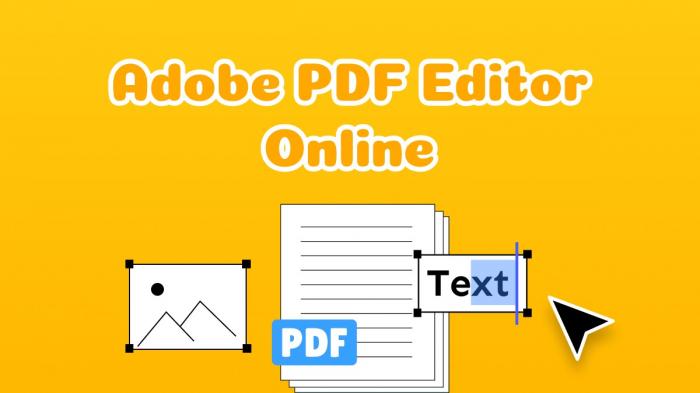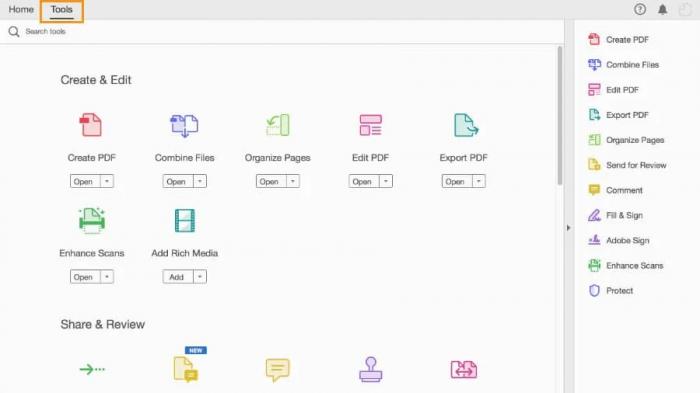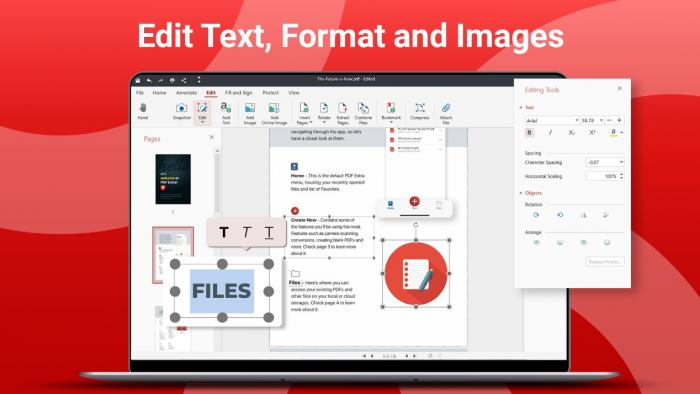Everything You Need to Know About Adobe PDF Editor
What is Adobe PDF Editor

Adobe PDF Editor is a powerful software tool developed by Adobe Systems for editing, creating, and managing PDF files. PDF, which stands for Portable Document Format, is a file format created by Adobe to present documents independently of the software, hardware, and operating system. Adobe PDF Editor allows users to manipulate PDF files in a variety of ways, including adding text, images, links, and annotations.
One key feature of Adobe PDF Editor is its ability to convert files from other formats to PDF and vice versa. This makes it a versatile tool for creating professional-looking documents, whether for business or personal use. Users can also merge multiple PDF files into a single document, rearrange pages, and password-protect sensitive information.
Overall, Adobe PDF Editor is a user-friendly and comprehensive tool for working with PDF files. Whether you need to edit text, images, or links, create new PDFs from scratch, or collaborate with others on a document, Adobe PDF Editor has you covered. With its advanced features and intuitive interface, Adobe PDF Editor is a must-have tool for anyone who regularly works with PDF files.
Features of Adobe PDF Editor

Adobe PDF Editor offers a wide range of powerful features that make it a top choice for both individuals and businesses. Some of the key features include:
- Editing Capabilities: Adobe PDF Editor allows users to easily edit text, images, and other elements within a PDF document. This includes the ability to add, delete, or manipulate content as needed.
- Document Conversion: With Adobe PDF Editor, users can convert documents from various file formats into PDF files seamlessly. This feature is especially useful for maintaining the formatting and layout of the original document.
- Annotation Tools: Users can annotate PDF documents by adding comments, highlights, stamps, and drawings to provide feedback or additional context.
- Secure Document Handling: Adobe PDF Editor offers advanced security features such as password protection, encryption, and digital signatures to ensure that sensitive information remains confidential.
- Collaboration Options: The software enables real-time collaboration on documents, allowing multiple users to review, edit, and comment on a PDF simultaneously.
- Integration with Other Adobe Products: Adobe PDF Editor seamlessly integrates with other Adobe products such as Adobe Acrobat and Adobe Creative Cloud, providing users with a comprehensive set of tools for document management and editing.
Overall, Adobe PDF Editor stands out for its robust features, user-friendly interface, and versatility, making it a valuable tool for anyone looking to create, edit, or manage PDF documents efficiently.
How to Edit PDFs with Adobe PDF Editor

Editing PDFs with Adobe PDF Editor is a seamless process that offers a wide range of possibilities to customize and modify your documents. Whether you need to make minor changes or completely overhaul the content, Adobe PDF Editor provides you with the tools to do so efficiently.
Adobe Acrobat offers a range of tools that allow you to modify your documents. These tools include adding images, highlighting text, cropping, and editing content using both text and images. Once you have made the desired changes, you can export the edited document. If you are wondering how to edit a PDF using Adobe Acrobat, follow these steps:
- Download and install Adobe Acrobat on your computer.
- Log in to your account in order to access the editing features.
- Open the document you wish to edit within Adobe Acrobat.
- Depending on the specific changes you want to make, choose the corresponding tool (such as add text, add image, or crop).
- After editing, remember to save your changes to the PDF file.
Before finalizing your document, it is recommended to carefully review and proofread it to prevent any errors that may arise during your studies or presentations.
Pros:
- Wide range of editing tools for PDF documents.
- Ideal for reading, creating, printing, and fine-tuning PDFs.
- Customizable interface.
- Compatible with Windows, Mac OS, and mobile devices.
- High level of document security for both offline and cloud storage.
Cons:
- Expensive and may experience lag.
- Interface could be more user-friendly.
- Complex for beginners.
- Requires a significant amount of disk space.
- Creation of an account is necessary even for minor edits.
Additionally, Adobe PDF Editor offers a plethora of editing options, including the ability to annotate, highlight, and redact text. These tools make it easy to collaborate with others and communicate your thoughts effectively within the document.
Overall, editing PDFs with Adobe PDF Editor is a straightforward process that empowers users to make changes with ease. Whether you are a seasoned professional or a novice user, Adobe PDF Editor provides the necessary tools to edit your PDF documents seamlessly and efficiently.
Comparison of Adobe PDF Editor with Other Tools
When it comes to editing PDF files, Adobe PDF Editor stands out as a top choice among various tools available in the market. Let’s explore how Adobe PDF Editor compares to other tools in terms of features, usability, and overall performance.
One of the key advantages of Adobe PDF Editor is its comprehensive set of features. From basic editing functionalities like text editing and image insertion to more advanced options such as form creation and document security, Adobe PDF Editor offers a wide range of tools to meet your editing needs. In comparison, other tools may offer limited features or lack the sophistication of Adobe PDF Editor.
In terms of usability, Adobe PDF Editor excels with its intuitive interface and user-friendly design. Navigating through the application is seamless, making it easy for both beginners and advanced users to edit PDF files efficiently. On the other hand, some alternative tools may have a steeper learning curve or lack the polish and ease of use that Adobe PDF Editor provides.
When it comes to performance, Adobe PDF Editor shines with its reliability and speed. Whether you’re editing a small document or a large file, Adobe PDF Editor performs consistently well, making it a dependable choice for professionals and casual users alike. In contrast, other tools may struggle with performance issues or lag when handling complex PDF files.
Overall, Adobe PDF Editor emerges as a strong contender in the realm of PDF editing tools, offering a compelling combination of features, usability, and performance that sets it apart from the competition. Whether you’re editing documents for work, school, or personal use, Adobe PDF Editor delivers a seamless editing experience that is hard to beat.
Best Practices for using Adobe PDF Editor
When using the Adobe PDF Editor, it’s essential to follow some best practices to ensure optimal performance and efficiency. Here are a few tips to help you make the most out of this powerful tool:
- Organize your files: Before you start editing, make sure to organize your files properly. Create folders and subfolders to keep your work organized and easily accessible.
- Use the right tools: Take advantage of the various editing tools available in Adobe PDF Editor, such as text editing, image editing, and annotation tools. Familiarize yourself with these tools to enhance your editing capabilities.
- Customize your workspace: Customize your workspace to suit your preferences and workflow. You can rearrange toolbars, panels, and menus to create a personalized editing environment that suits your needs.
- Optimize for mobile: If you plan to view or share your edited PDFs on mobile devices, make sure to optimize them for mobile viewing. This includes adjusting font sizes, layouts, and image sizes for better readability on smaller screens.
- Collaborate efficiently: If you’re working on a PDF with multiple collaborators, use Adobe’s collaboration features to streamline the editing process. Share comments, annotations, and feedback seamlessly to improve collaboration.
By following these best practices, you can maximize your productivity and efficiency when using Adobe PDF Editor. Stay organized, utilize the right tools, customize your workspace, optimize for mobile, and collaborate effectively to make the most out of this versatile editing tool.
Conclusion
In conclusion, Adobe PDF Editor stands out as a versatile and powerful tool for all your document needs. With its user-friendly interface and extensive array of features, it has become the go-to choice for professionals and individuals alike.
From creating and editing PDFs to converting files and adding interactive elements, Adobe PDF Editor offers a comprehensive solution that meets all your document management requirements. Its seamless integration with other Adobe products and cloud storage options make it even more convenient and efficient to use.
Not only does Adobe PDF Editor provide a smooth user experience, but it also ensures the security and integrity of your documents. With advanced encryption features and secure sharing options, you can have peace of mind knowing that your sensitive information is protected.
As technology continues to evolve, Adobe remains committed to enhancing its PDF Editor with new and innovative features. From improved collaboration tools to streamlined workflows, the future updates promise to make your document management more efficient and effective than ever before.
With its robust features, user-friendly interface, and ongoing innovation, it is sure to remain the industry leader in PDF editing software for years to come.
